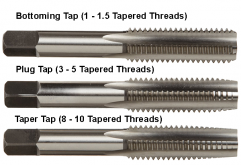Sillyputty
Solar Enthusiast
- Joined
- Jul 21, 2020
- Messages
- 188
Thanks a fantastic document - thanks for making that effort.
The only small aspect I’m not understanding is his you removed the tang at the end - the YouTube video I found was thru-hole, so he just had to push the tang through.
With the tang resting against the bottom of the cell, how did you remove it?
And the other question I have for you is if you were using a Helicoil to attach a permanent M6 grubscrew, when would you use Loctite Red? Both on the Helicoil when it is installed and again when the grubscrew is threaded (and the Helicoil has cured)?
I've successfully helicoiled one terminal and made the 'mistake' of installing the coil with the tang "up" rather than on the bottom, as that was what was shown in the particular video I watched. It was easy to install (and to break off) and seems just fine.
Last edited:



